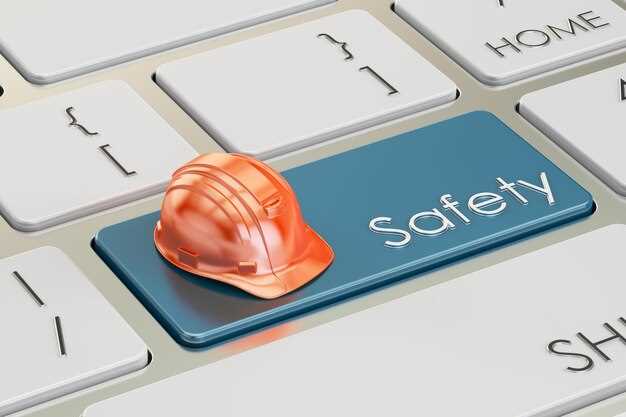
Modification of systems and structures is a routine part of engineering practices aimed at improving efficiency, performance, or functionality. However, these changes can significantly impact safety compliance. It is crucial to conduct thorough checks to ensure that any modifications made do not compromise safety standards. Engineering teams must be diligent in assessing potential risks associated with these updates.
Safety compliance is not merely a checkbox but a significant aspect of the engineering process. After modifications, comprehensive assessments should be undertaken, including risk evaluations and safety audits. These steps guarantee that all engineering adjustments uphold the necessary safety regulations and that any new risks introduced are adequately managed.
Incorporating a systematic approach to modifications ensures that safety remains the paramount concern. The integration of regular checks into the modification process aids in identifying potential safety issues early on, allowing for timely interventions and adjustments. By adhering to best practices in safety compliance, organizations can protect both their assets and personnel from the consequences of overlooked engineering changes.
Ensuring Safety Compliance After Modifications
After any modifications to engineering systems or processes, it is crucial to ensure that safety compliance is maintained. Modifications can introduce new risks or change existing safety parameters, necessitating a thorough review of the affected components and systems.
Firstly, conducting comprehensive engineering checks is essential. These checks should evaluate the modifications against existing safety standards and regulations. Engineers should assess structural integrity, functionality, and potential hazards introduced by the changes. This process includes simulations and stress tests to predict the modified system’s behavior under various conditions.
Secondly, a systematic review of all documentation related to the modifications is necessary. This review should encompass design modifications, safety protocols, and maintenance procedures. Ensuring that all documentation is updated and reflects the latest changes helps maintain clarity and compliance with safety regulations.
Moreover, involving safety compliance experts during the modification process can provide valuable insights. Their expertise can aid in identifying potential compliance issues early on, allowing for timely adjustments before final implementation.
Additionally, conducting regular audits post-modification ensures that the engineering checks and reviews remain effective over time. These audits help verify that the system continues to meet safety standards and that any new risks are promptly addressed.
In conclusion, ensuring safety compliance after modifications requires meticulous engineering checks, thorough reviews of documentation, and ongoing audits. By taking these steps, organizations can mitigate risks and maintain a safe operational environment.
Conducting Comprehensive Safety Checks Post-Modification

After any modifications have been made to equipment, processes, or systems, it is crucial to conduct comprehensive safety checks to ensure continued compliance with safety standards. This step helps identify potential hazards that may arise due to changes implemented during the modification process.
The safety checks should include a detailed review of all modifications, assessing their impact on the overall safety of operations. Key areas of focus during the review process should encompass structural integrity, operational functionality, and adherence to regulatory requirements.
| Safety Check Area | Description | Purpose |
|---|---|---|
| Structural Integrity | Examine the integrity of modified components or structures. | Identify potential physical hazards and prevent structural failures. |
| Functional Testing | Test the modified equipment or systems to ensure they operate as intended. | Ensure reliability and effectiveness of operations post-modification. |
| Compliance Review | Review modifications against relevant safety regulations and guidelines. | Ensure ongoing compliance with industry standards and legal obligations. |
| Risk Assessment | Conduct a risk assessment to evaluate new potential hazards that could arise from modifications. | Proactively mitigate risks to enhance safety measures. |
Through these checks and reviews, organizations can identify any weaknesses introduced by modifications. This proactive approach not only enhances workplace safety but also fosters a culture of continuous improvement and accountability.
It is also advisable to involve cross-functional teams during the safety checks, including engineers, safety officers, and operational staff, to gain diverse insights and ensure that all aspects of safety are thoroughly reviewed. Regular documentation of the safety checks undertaken promotes transparency and provides a record that can be referenced for future modifications.
Implementing a Structured Engineering Review Process
To ensure safety compliance following modifications in any engineering project, a structured engineering review process is essential. This systematic approach allows teams to evaluate design changes comprehensively, ensuring that all safety and regulatory standards are met.
The primary goals of the engineering review process include:
- Identifying potential risks associated with modifications
- Confirming the efficacy of engineering checks
- Ensuring adherence to regulatory compliance
- Facilitating collaboration among engineering teams
A structured engineering review process typically involves the following steps:
- Preparation: Gather all relevant documents, including original designs, modification proposals, and safety standards. Ensure all team members are aware of the review objectives.
- Initial Review: Conduct a preliminary assessment of the proposed modifications. Identify any immediate safety concerns or compliance issues.
- Checks and Documentation: Perform detailed engineering checks on the modifications. This may include calculations, simulations, or prototype testing. Document all findings meticulously.
- Peer Review: Arrange for an independent review by other engineering professionals. This step enhances objectivity and provides additional insights into potential risks.
- Action Items: Create a list of corrective actions based on the findings from both the initial and peer reviews. Assign responsibilities and deadlines for resolution.
- Final Approval: After addressing all action items, seek final approval from authorized personnel. Ensure that the modifications meet all safety and compliance requirements.
- Post-Implementation Review: After implementing the modifications, conduct a follow-up review to assess the effectiveness of the changes and the engineering review process itself. This allows for continuous improvement.
By implementing a structured engineering review process, organizations can significantly enhance their ability to maintain safety compliance after modifications, mitigating risks and ensuring project integrity.
Documenting Compliance and Review Findings for Future Reference

Proper documentation is crucial in the engineering field, particularly after modifications to ensure safety compliance. By meticulously recording compliance checks and review findings, organizations can create a reliable repository for future reference. This repository serves as a vital tool for audits, assessments, and ongoing improvement initiatives.
Steps for Documenting Compliance:
First, establish a standardized template for documenting review findings. This template should include sections for the objectives of the checks, methodologies employed, results, and any deviations observed. Including a section for observations allows engineering teams to reflect on issues that arise during the review, promoting a culture of continuous improvement.
Next, ensure that all compliance checks are logged in detail. Notate who conducted the review, the date of the evaluation, and specific compliance criteria measured. This information not only aids in tracking the progress of safety measures but also enhances accountability among team members.
Review Findings Documentation:
After completing compliance checks, summarize the findings in a clear and concise manner. Highlight any non-conformities and outline corrective actions taken or suggested. It’s beneficial to categorize findings based on their severity and impact on safety. This categorization helps prioritize follow-up actions and resource allocation.
In addition, maintaining records of previous modifications and their associated compliance checks enables teams to identify trends and recurring issues. Regularly reviewing these documents allows engineering departments to implement corrective measures proactively, thereby enhancing overall safety and compliance.
Future Reference:
A comprehensive compliance documentation system not only supports current safety initiatives but also provides insight for future projects. By analyzing past reviews, engineering teams can better understand potential risks, improve design practices, and facilitate information sharing across departments. This collaborative approach fosters a culture of safety and compliance, ensuring that lessons learned are not lost over time.




